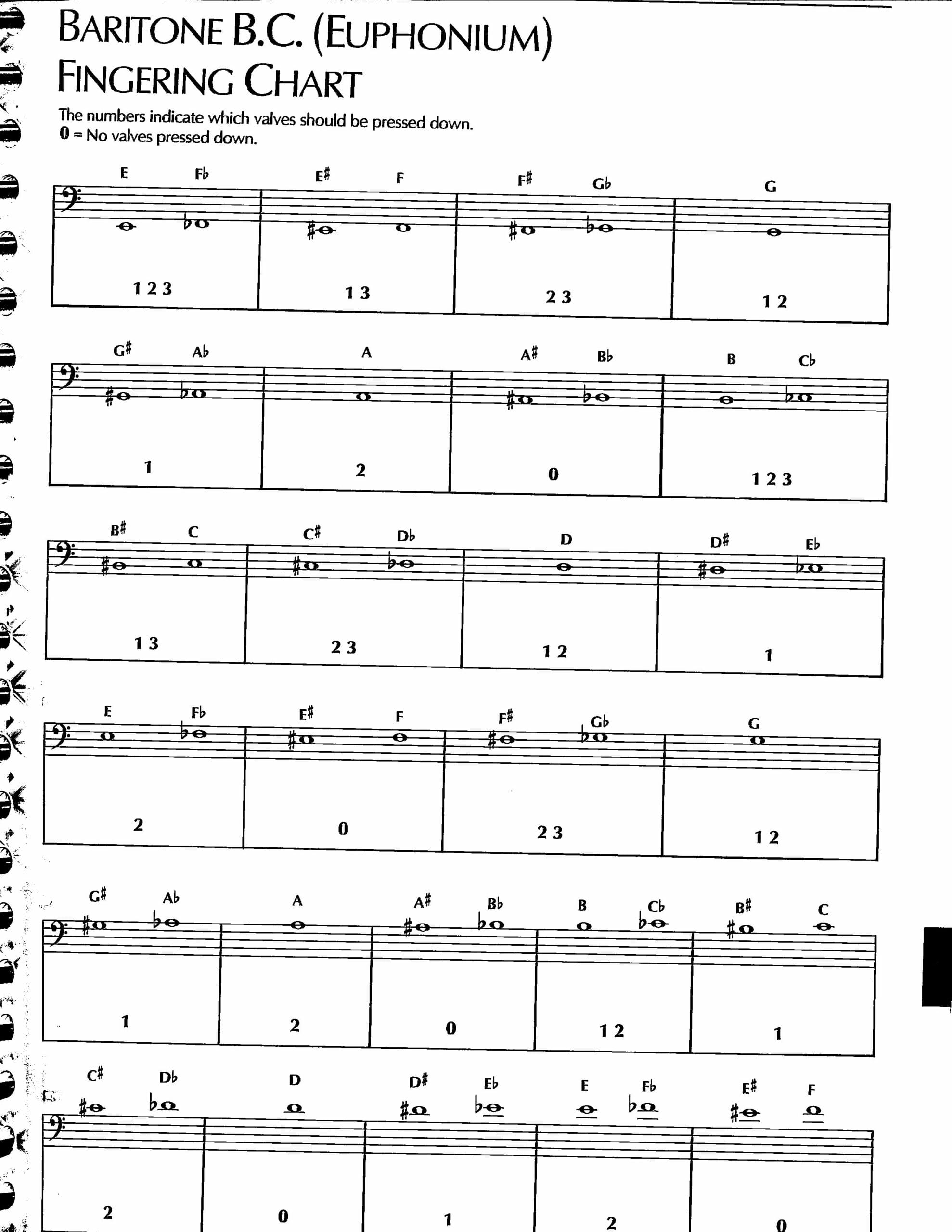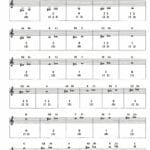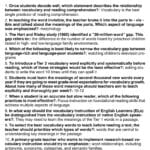This comprehensive guide covers everything from basic fingerings to advanced techniques, helping you unlock the full potential of your euphonium. Whether you’re a beginner or a seasoned player, you’ll find valuable insights and practical advice to enhance your musical journey.
Discovering the Euphonium Fingering Chart
So, you’re intrigued by the euphonium? Excellent! This guide demystifies the euphonium fingering chart, the foundation for producing notes on this rich-sounding instrument. Whether you’re a novice or looking to refine your skills, understanding the chart is key to unlocking the euphonium’s melodic potential.
What is a Fingering Chart?
A fingering chart is essentially a roadmap showing which valves to press for each note. Think of it as a cheat sheet for your fingers! This guide provides charts for both bass clef (lower notes) and treble clef (higher notes), equipping you for any musical piece. These charts eliminate the guesswork, especially for beginners.
Compensating vs. Non-Compensating Euphoniums
Euphoniums come in two main types: compensating and non-compensating. The difference lies in their valve systems, which influences intonation (how in tune the notes are) and consequently, the fingerings. Don’t worry, it’s simpler than it sounds! Knowing your euphonium type ensures you use the correct chart and play in tune. Some experts suggest that compensating euphoniums offer slightly better intonation, while others debate the practical difference in playing. Both types are widely used and produce beautiful sounds.
Beyond the Basics: Advanced Techniques
Once you’ve mastered basic fingerings, explore techniques like lip slurs (smoothly changing notes without valves) and bending (subtly adjusting pitch). These techniques add expressiveness and nuance to your playing, enriching your musical “recipe.” Current research continues to explore the physics behind these techniques, so our understanding is always evolving.
Practice Makes Perfect
Memorizing the fingering chart might seem daunting, but regular practice makes it second nature. Techniques like flashcards, scales, arpeggios (note patterns), and playing along with recordings can significantly aid memorization, rhythm, and timing. Have you ever used an ehr tutor to help facilitate your learning experience?
| Note | Fingering (Compensating) | Fingering (Non-Compensating) |
|---|---|---|
| C (low) | 0 | 0 |
| D | 1 | 1 |
| E | 2 | 2 |
| F | 1-2 | 1-2 |
| G | 1-3 | 1-3 |
| A | 2-3 | 2-3 |
| B♭ | 1-2-3 | 1-2-3 |
| C (middle) | 4 | 4 |
(This is a simplified example. A complete chart would include all notes within the euphonium’s range.)
Remember, these fingerings can vary slightly depending on the instrument and player preferences. Experiment to find what feels most comfortable. The chart is a guide, not a strict rulebook.
Keep Exploring!
Learning the euphonium is a continuous journey. Embrace exploration and experimentation! Numerous resources—websites, videos, and books—can deepen your understanding. Remember, music is self-expression, so have fun! Discovering the secrets of our planet’s multifaceted ecosystems can unveil wonders that rival rainforests themselves. The more you practice and explore, the more you’ll discover the euphonium’s amazing possibilities.
Mastering the 4-Valve Euphonium
Ready to delve into the world of the 4-valve euphonium? Let’s explore how to make this magnificent instrument sing.
The 4th Valve: Expanding Your Musical Landscape
That extra 4th valve, conveniently located under your left index finger, isn’t just for decoration. It’s your gateway to the lower register, typically lowering the pitch by a perfect fourth (five half-steps). This unlocks rich, resonant low notes unavailable on a 3-valve euphonium, significantly expanding your musical range.
Fingering Charts: Your Guide, Not Dictator
Fingering charts are invaluable, especially for beginners. They visually map valve combinations to specific notes. However, remember they’re guidelines, not strict rules. Every euphonium’s acoustics differ slightly, and even temperature and humidity can affect intonation. While the chart provides a starting point, train your ear to fine-tune fingerings for a pure, resonant sound.
Embouchure and Breathing: The Foundation of Sound
Your embouchure (mouthpiece placement) is fundamental to your tone. It’s a delicate balance of muscle control and airflow. A good embouchure produces a focused, clear sound. Breathing is equally crucial. Deep, controlled breaths from your diaphragm power your sound, especially for sustained notes. Explore various techniques to discover what works best for you.
Articulation: Shaping Your Musical Expression
Articulation, how you start and stop notes, adds character and shape to your music. Tonguing, where your tongue briefly touches the mouthpiece reed, is a common technique. Mastering single tonguing (“too” or “doo”), double tonguing (“too-koo” or “doo-goo”), and even triple tonguing enhances your musical vocabulary and allows for greater nuance.
Advanced Techniques: Elevating Your Artistry
Once comfortable with the basics, explore advanced techniques. Alternate fingerings can improve intonation or simplify tricky passages. Vibrato, a slight pitch wobble, adds warmth and emotion. Experiment with different vibrato techniques—jaw, diaphragm, or a combination—to find your preferred style.
Maintenance: Caring for Your Instrument
Regular maintenance keeps your euphonium in top shape. Clean it regularly to remove moisture and debris, oil the valves for smooth movement, and care for your mouthpiece to ensure a good seal. A little preventative maintenance preserves your instrument’s lifespan and optimizes its performance.
Learning the euphonium is a continuous journey. Embrace the challenges, celebrate your progress, and most importantly, have fun! Continuously practice, listen, and explore the rewarding world of low brass.
Playing D on the Euphonium
Let’s break down how to play D on the euphonium confidently and clearly, whether in bass or treble clef.
Playing D in Bass Clef
For the lower D in the bass clef, press the second valve. If the note sounds slightly off, adjust your embouchure—the way your lips are pursed and the pressure you apply. If the issue persists, your euphonium might need tuning.
Playing D in Treble Clef
For the higher D in the treble clef, the standard fingering is pressing the first and second valves together. Alternatively, some players find using the first and third valves produces a clearer sound. Experiment to discover what works best for you.
Fine-tuning Your D
Even when hitting the D correctly, continuous refinement is important. Practice long tones on D to develop a steady, consistent sound. Playing scales and arpeggios containing D improves finger coordination and transitions.
Troubleshooting
| Problem | Possible Solutions |
|---|---|
| D sounds flat | Adjust embouchure for more air pressure. Check tuning. |
| D sounds sharp | Adjust embouchure for less air pressure. Check tuning. |
| D sounds airy/breathy | Ensure a tight mouthpiece seal. Firm up your embouchure. |
| Difficulty switching valves | Practice slow, deliberate valve changes. Use a fingering chart. |
Ongoing Learning
Music is constantly evolving, so explore alternative fingerings and approaches. Consult other players or teachers for valuable insights. Experimenting with different mouthpiece sizes might also influence the sound. The key is consistent practice and experimentation.
Playing B on the Euphonium
Let’s delve into playing B on the euphonium, a versatile note with diverse fingerings and nuances.
Embouchure and Breath Support: The Foundation
Your embouchure is like your euphonium’s vocal cords. Experiment to find what produces the best sound for you. Breath support, through deep controlled breaths, is crucial for maintaining a steady tone.
Navigating the Fingerings
Multiple ways exist to play B on the euphonium, offering flexibility depending on the octave and musical passage:
Standard Fingering: Bass clef typically uses 1-2, while treble clef typically uses just 2.
Alternate Fingerings: Bass clef can use 2-3 as an alternative, while treble clef can use 1. Experiment to find what feels most comfortable.
Compensating vs. Non-Compensating: Your euphonium’s system can affect intonation and fingerings. Compensating systems are designed for better intonation, particularly in the lower register.
| Clef | Standard Fingering | Alternate Fingering |
|---|---|---|
| Bass Clef | 1-2 | 2-3 |
| Treble Clef | 2 | 1 |
Building Proficiency through Practice
Incorporate these exercises into your routine:
Scales and Arpeggios: This builds finger dexterity and muscle memory.
Melodies and Etudes: Apply fingerings in musical contexts.
Long Tones: Develop breath control and consistent tone quality.
Visual and Auditory Aids
Fingering Charts: Use them as a quick reference, especially when learning.
Instructional Videos: These offer valuable insights into technique and embouchure.
The Journey to Mastery
Mastering the B, or any note, is a journey. Be patient, celebrate progress, and continuously explore your instrument. While the suggested methods are generally effective, ongoing research may reveal further refinements. Experiment, seek guidance from experienced musicians, and enjoy the continuous exploration that music offers.
- Unlock Elemental 2 Secrets: Actionable Insights Now - April 2, 2025
- Lot’s Wife’s Name: Unveiling the Mystery of Sodom’s Fall - April 2, 2025
- Photocell Sensors: A Complete Guide for Selection and Implementation - April 2, 2025

















2 thoughts on “Mastering the Euphonium: The Ultimate Fingering Chart Guide (Beginner to Advanced)”
Comments are closed.